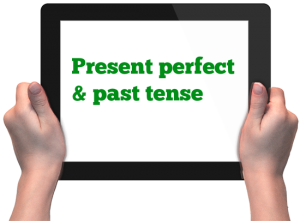Lesson/Unit Summary: This lesson plan aims to help senior primary students to distinguish the different meanings expressed by the past tense and the present perfect aspect. The inclusion of an information gap activity is one of the features of this lesson plan. The simulated activity offers a purpose for student interaction. In order to come up with a recommendation of the best places to visit for a friend from overseas, students in pairs need to exchange information verbally with each other by using the past tense and the present perfect. They then need to make a presentation to the whole class to explain the rationale behind their choices. In the follow-up activity to consolidate the command of the two tenses, students need to relate to their personal experience and compose a text that recalls their happy / unforgettable experience in a favourite place they have visited with the use of the past tense and the present perfect aspect.
Level of Students: Senior Primary
Lesson Duration: 45 minutes
Learning Objectives:
At the end of this lesson, students should be able to:
- Tell the different meanings expressed by the past tense and the present perfect tense
- Use the past tense to express past events with specified time and present perfect tense to express past events with unspecified time
- Use the past tense and the present perfect tense to write about happy/unforgettable experiences
Lesson Plan: Present Perfect and Past Tense (Senior Primary)
Teaching Materials:
Useful Websites:
- http://www.perfect-english-grammar.com/present-perfect-or-past-simple.html
- https://www.ego4u.com/en/cram-up/grammar/simpas-preper
- http://www.englishpage.com/verbpage/presentperfect.html
- http://learnenglish.britishcouncil.org/en/english-grammar/verbs/present-tense/present-perfect
Acknowledgements:
We would like to express our gratitude to Lee Gwangmin for sending the project team her original lesson plan and allowing us to make modifications to it.
The copyright of the learning materials belongs to The Education University of Hong Kong. We are grateful to the original authors for granting us the right to share their ideas. Please fully acknowledge the source of the materials and the authors.
Duplication of the materials is restricted to non-profit making educational purposes only. Otherwise, no part of these materials may be reproduced, stored in a retrieval system, or transmitted in any form or by any means without the prior permission of the Project Supervisor.
To cite this resource:
Kian, H. C. G, & Lee, F. K. J. (2020).Present perfect and past tense. Retrieved from https://lml.eduhk.hk/grammar/?page_id=279.
Please tell us about our website via the Evaluation Form


